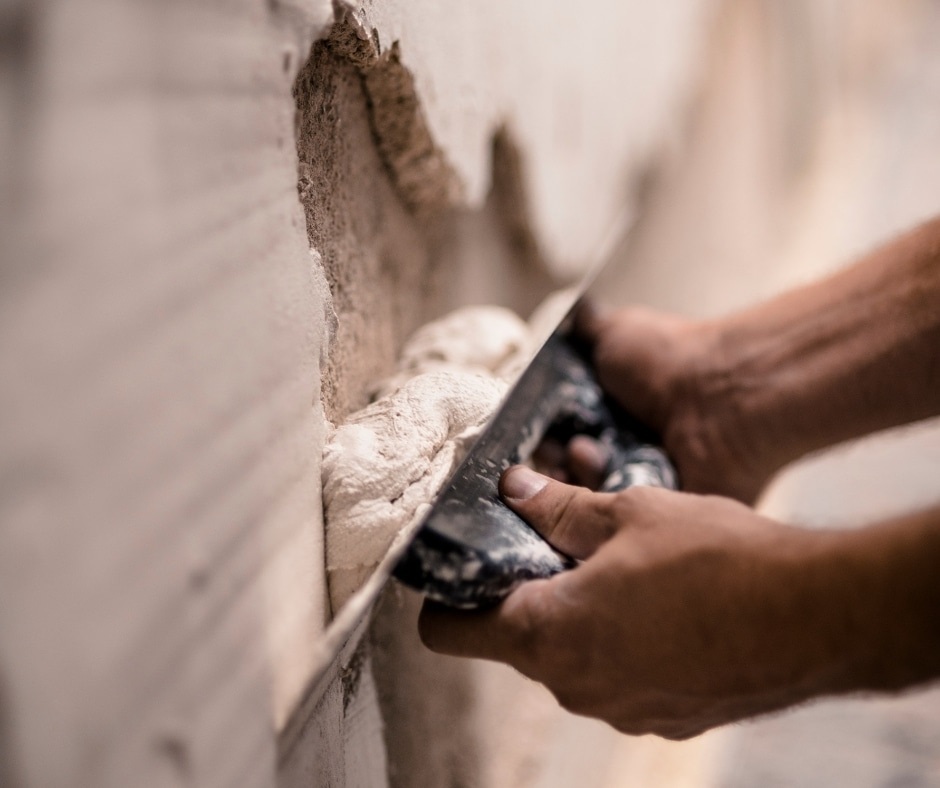Historical Use of Asbestos in Stucco
Asbestos, a naturally occurring mineral, found its way into numerous building materials during the 20th century, including stucco. In the past, asbestos was prized for its durability and resistance to heat and fire, making it an attractive additive for construction. Stucco, a popular exterior finish, often contained asbestos fibers to enhance its strength and longevity. This practice was particularly common from the early 1900s until the late 1970s.
Common Misconceptions About Asbestos in Stucco
Many believe that all stucco contains asbestos, but this isn’t necessarily true. While older homes may have stucco with asbestos, newer constructions are typically asbestos-free. Some people also mistakenly think that stucco itself is the source of asbestos, when in fact, it is often the backing materials, like cement sheeting, that contain the mineral. It’s crucial to distinguish between these elements to properly assess any potential risks.
Legal Regulations on Asbestos Use in Stucco
Over the years, regulations have tightened regarding asbestos use in building materials, including stucco. By the late 1980s, many countries had banned or severely restricted asbestos due to its health risks. In the United States, for instance, the Environmental Protection Agency (EPA) has specific guidelines for handling and disposing of asbestos. However, it is still legal to add asbestos to certain products in some places, making it essential for homeowners to stay informed about legal requirements and ensure compliance when dealing with asbestos in their homes.
Health Risks Associated with Asbestos Exposure
Mesothelioma and Other Health Conditions
Asbestos exposure is a serious concern due to its link to various health issues. One of the most severe conditions caused by asbestos is mesothelioma, a rare and aggressive cancer that affects the lining of the lungs, heart, or abdomen. Mesothelioma is particularly insidious because symptoms may not appear until decades after exposure. In addition to mesothelioma, asbestos exposure can lead to lung cancer and asbestosis, a chronic lung disease that causes scarring of lung tissue. These conditions are primarily caused by inhaling asbestos fibers, which become lodged in the lungs and cause inflammation and scarring over time.
Long-term Effects of Asbestos Exposure
The long-term effects of asbestos exposure can be devastating. Many individuals exposed to asbestos may not show symptoms for 20 to 50 years, making early detection and prevention challenging. Over time, the fibers can cause persistent coughing, shortness of breath, and chest pain. It’s important to note that even short-term exposure to asbestos dust can lead to serious health risks, including cancer. Asbestos-related diseases often have a poor prognosis, emphasizing the importance of minimizing exposure and seeking medical attention if exposure is suspected.
Safety Measures to Prevent Asbestos Inhalation
Preventing asbestos inhalation is crucial for health and safety. Here are some steps to reduce the risk:
- Identify Potential Sources: Be aware of materials in your home that may contain asbestos, such as older stucco, insulation, or flooring.
- Avoid Disturbance: Do not disturb materials that may contain asbestos. If you suspect asbestos, leave it intact and consult professionals.
- Professional Assessment: Hire a certified asbestos inspector to conduct a thorough assessment if you suspect asbestos in your home.
- Use Protective Gear: If you must handle asbestos, wear appropriate protective gear, including masks and gloves, to minimize exposure.
- Regular Monitoring: Regularly monitor areas that may contain asbestos to ensure they remain undisturbed and in good condition.
By understanding the risks and taking proactive measures, individuals can significantly reduce the potential health hazards associated with asbestos exposure.
Identifying Asbestos in Home Stucco Walls
Visual Indicators of Asbestos in Stucco
Spotting asbestos in stucco walls isn’t straightforward, as it doesn’t stand out visibly. However, homes built before the 1980s are more likely to contain asbestos. Older stucco might have a rough, textured appearance, often paired with materials like cement sheeting, which could contain asbestos fibers. If you’re unsure, it’s wise to check with a professional.
Professional Testing for Asbestos
When it comes to confirming the presence of asbestos, professional testing is the most reliable method. Experts take samples from different wall sections and send them to a lab for analysis. This process ensures a precise identification, helping homeowners make informed decisions about handling potential asbestos materials.
DIY Methods for Asbestos Detection
For those inclined to do it themselves, there are kits available for collecting samples, but extreme caution is necessary. When gathering samples, wear protective gear to avoid inhaling any particles.
- Wet the area to minimize dust.
- Use a clean, sharp tool to carefully extract a small piece of the stucco.
- Secure the sample in an airtight container and send it to a certified lab for testing.
Remember, even with DIY methods, consulting with professionals is always recommended to ensure safety and accuracy.
How to Check for Asbestos in Home Stucco Walls
Steps for Safe Asbestos Inspection
Checking for asbestos in home stucco walls is a task that should be approached with caution. Safety is paramount, as disturbing asbestos can lead to serious health risks. Here’s a step-by-step guide to ensure a safe inspection:
- Prepare the Area: Before starting, clear the area of any unnecessary items and ensure proper ventilation. Wear protective gear, including a mask, gloves, and goggles, to minimize exposure.
- Visual Inspection: Begin with a visual inspection of the stucco. Look for signs of wear and tear, such as cracks or damage, which might indicate the presence of asbestos.
- Sample Collection: If you suspect asbestos, carefully collect a sample of the stucco material. Avoid creating dust. It’s advisable to hire a professional for this step to ensure safe handling.
- Laboratory Testing: Send the collected sample to a certified laboratory for analysis. This is the most reliable method to confirm the presence of asbestos.
- Consult Professionals: If asbestos is detected, consult with a professional asbestos inspector to discuss the next steps and potential removal options.
Tools Required for Asbestos Testing
Having the right tools is essential for testing asbestos in stucco walls. Here’s a list of items you might need:
- Protective clothing, including masks and gloves, to prevent inhalation and skin contact.
- A small chisel or knife to carefully remove a sample from the wall.
- A sealable plastic bag to safely store the sample for laboratory testing.
Hiring a Professional Asbestos Inspector
While DIY methods exist, hiring a professional asbestos inspector is the safest option. Professionals have the expertise and equipment to handle asbestos safely. They can provide a thorough inspection and offer guidance on the necessary steps if asbestos is found. Remember, homeowners suspecting asbestos should always seek expert advice to ensure compliance with health and safety regulations.
Safe Removal of Asbestos-Containing Stucco
Professional Asbestos Removal Services
Removing asbestos-containing materials, like stucco, is a task best left to the experts. Hiring licensed asbestos abatement professionals ensures that the hazardous material is handled with care, minimizing the risk of exposure. These professionals follow strict safety protocols and use specialized equipment to safely remove and dispose of asbestos. It’s crucial to choose a certified service to ensure compliance with local and federal regulations.
DIY Asbestos Removal Precautions
While it is highly recommended to hire professionals, some homeowners might consider a DIY approach. If you choose this path, there are critical precautions to follow:
- Wear protective gear: Use a high-quality respirator, disposable coveralls, gloves, and safety goggles.
- Wet the material: Before any removal, wet the asbestos-containing stucco with a water and soap mixture to reduce airborne particles.
- Use appropriate tools: A flat pry bar can help in carefully removing the stucco without breaking it into smaller, more dangerous pieces.
Remember, improper handling can lead to serious health risks. Always consult with a professional before attempting any removal.
Legal Requirements for Asbestos Disposal
Disposing of asbestos is heavily regulated to protect public health. Once removed, the asbestos material must be carefully sealed in leak-proof containers and labeled according to legal standards. Failure to comply with these regulations can result in hefty fines and penalties. It’s essential to check both federal and local guidelines to ensure proper disposal. Often, the safest route is to let professionals handle the entire process, from removal to disposal, ensuring that all legal requirements are met.
Alternatives to Asbestos-Containing Stucco
With the growing awareness of the health risks associated with asbestos, finding alternatives to asbestos-containing stucco has become crucial for homeowners and builders alike. Modern construction materials offer safer and more efficient options, ensuring the safety of residents while maintaining aesthetic appeal.
Modern Stucco Materials
Today’s market offers a variety of stucco materials that do not contain asbestos. These materials are designed to provide the same durability and fire resistance without the health risks. Some popular options include:
- Acrylic Stucco: Known for its flexibility and resistance to cracking, acrylic stucco is a synthetic material that provides a smooth finish.
- Cement-Based Stucco: This traditional option, now free of asbestos, remains a favorite for its robust nature and adaptability to different architectural styles.
- EIFS (Exterior Insulation and Finish Systems): While not technically stucco, EIFS provides a similar appearance with added insulation benefits.
Benefits of Asbestos-Free Stucco
Switching to asbestos-free stucco materials brings several advantages:
- Health Safety: Eliminating asbestos from building materials significantly reduces the risk of health issues like mesothelioma and asbestosis.
- Environmental Impact: Modern stucco materials are often more environmentally friendly, reducing the carbon footprint of construction projects.
- Longevity and Maintenance: Non-asbestos stucco solutions are designed to be more durable and require less maintenance over time.
Cost Comparison: Asbestos vs. Non-Asbestos Stucco
When considering the switch, it’s important to evaluate the costs involved. While asbestos-free options might have a slightly higher upfront cost, the long-term savings in health, maintenance, and potential legal fees are substantial. Here’s a basic cost comparison:
- Initial Installation Costs: Non-asbestos stucco may cost more initially due to the use of advanced materials and techniques.
- Maintenance Costs: Asbestos-free options often require less frequent repairs, saving money in the long run.
- Health and Legal Costs: Avoiding asbestos can save on potential medical expenses and legal issues related to asbestos exposure.
In conclusion, the shift towards asbestos-free stucco is not just a trend but a necessary step for safe and sustainable building practices. By choosing modern alternatives, homeowners can enjoy peace of mind knowing their homes are both beautiful and safe.
Regulations and Guidelines for Asbestos in Homes
Asbestos regulation in the United States is a complex issue, primarily governed by federal agencies like the Environmental Protection Agency (EPA) and the Occupational Safety and Health Administration (OSHA). The Public Buildings Service requirements ensure compliance with OSHA regulations, emphasizing the importance of managing asbestos safely. Each state may also have its own specific regulations, which can sometimes be stricter than federal laws. These regulations cover aspects such as the handling, removal, and disposal of asbestos-containing materials, ensuring that both professionals and homeowners adhere to safety standards.
Homeowner Responsibilities for Asbestos
Homeowners play a critical role in the management of asbestos in their properties. They must ensure that any asbestos-containing materials are not disturbed, as this can release dangerous fibers into the air. If renovation or demolition work is planned, it’s essential to hire licensed professionals to handle asbestos safely. Homeowners should also be aware of the final rule established in 2019 which prohibits certain uses of asbestos no longer available in the market. Regular inspections and maintenance can help prevent accidental exposure and ensure compliance with regulations.
Penalties for Non-Compliance with Asbestos Laws
Failing to comply with asbestos regulations can lead to severe penalties, including fines and legal action. Non-compliance not only endangers public health but also violates environmental laws. It’s crucial for homeowners and contractors to stay informed about current regulations and ensure all work involving asbestos is conducted legally and safely. Ignorance of the law does not exempt one from penalties, making it vital to consult with professionals and stay updated on any changes in asbestos legislation.
The Role of Asbestos in Building Materials
Asbestos in Other Common Building Materials
Asbestos has been a staple in the construction industry due to its durability and resistance to heat, water, and chemicals. It was widely used in materials like cement, roofing shingles, and floor tiles. Its fire-resistant properties made it an essential component in many construction materials. Although asbestos is now recognized for its health risks, it was once valued for its ability to enhance the longevity and safety of buildings.
Why Asbestos Was Used in Construction
The use of asbestos in construction was primarily due to its insulating properties. It was an effective insulator in various applications such as steam engines, turbines, and boilers. This mineral could withstand high temperatures and was resistant to electricity, making it ideal for use in building materials. The cost-effectiveness of asbestos also contributed to its widespread use, especially during the industrial boom of the 20th century.
Current Trends in Asbestos-Free Building Materials
Today, the construction industry is moving away from asbestos, focusing on safer alternatives. Materials like fiberglass, cellulose, and polyurethane foam are gaining popularity as they provide similar benefits without the health risks. In addition, stricter regulations have led to a decline in the use of asbestos in building materials. However, asbestos is still present in some consumer products, highlighting the need for continued vigilance and innovation in the industry.
The Future of Asbestos in Construction
Innovations in Asbestos Alternatives
The construction industry is always on the lookout for safer and more sustainable materials. Innovations in asbestos alternatives have become a focal point, as builders and manufacturers seek to replace this hazardous material with safer options. Some of the most promising alternatives include:
- Cellulose fibers: These are derived from plants and are used in various building materials as an eco-friendly substitute.
- Polyurethane foams: These provide excellent insulation without the health risks associated with asbestos.
- Amorphous silica fabrics: Known for their high-temperature resistance, these fabrics offer a safer alternative for applications that traditionally used asbestos.
These innovations not only reduce health risks but also contribute to more sustainable building practices.
Global Trends in Asbestos Regulation
Around the world, there’s a growing consensus on the need to regulate or ban asbestos. Countries like Australia and the UK have already implemented strict bans, while others are gradually phasing out its use. This global shift is driven by the recognition of asbestos’s severe health risks, including mesothelioma, a cancer linked to asbestos exposure. As more nations join the movement, the construction industry is adapting by investing in safer materials and technologies.
The Impact of Asbestos Bans on the Construction Industry
The bans on asbestos have significantly impacted the construction sector. Companies have had to pivot quickly, finding new materials and adjusting their practices to comply with regulations. This shift has led to increased costs initially, but the long-term benefits are clear: safer working conditions and reduced health risks. Moreover, advancements in asbestos removal technologies have made it easier for companies to manage existing asbestos materials safely, ensuring that the transition away from asbestos is as smooth as possible.
Overall, the future of construction is moving towards a world where asbestos is no longer a part of building materials, paving the way for safer, healthier environments.
Extended Resources













